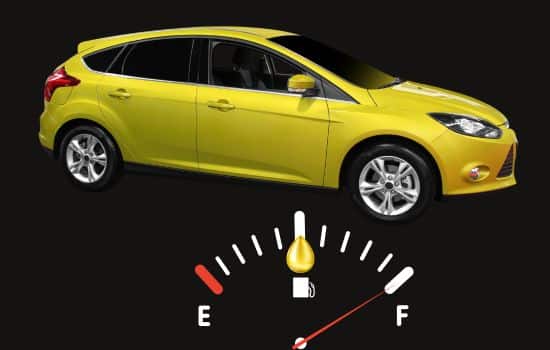Advertisements
Hello and welcome! If you are interested in knowing which are the 5 Cars with the Highest Gas Consumption in the United States, you are in the right place.
Although many people today prefer fuel-efficient vehicles, there are those who need the strength and power that only certain models can offer, especially for heavy-duty tasks.
Advertisements
These cars, generally designed for cargo transportation or commercial activities, stand out for their capacity and power, although their gasoline consumption can be an expensive aspect for those who use them daily.
In this article, we will introduce you to the five cars that lead in gasoline consumption in the United States, we will explain their characteristics and in which cases they are recommended.
Advertisements
At the end, you'll find a comparison table and FAQ section to clear up any questions you may have about these vehicles and help you decide if any of them might be ideal for your needs.
See Also
- Turning your mobile into a remote control
- The Perfect App to Watch Free Movies from your Mobile
- Your Ideal App to Listen to Free Music
- Maximize your cell phone speed with 5G
- Measure with Precision
1. Ford F-250 Super Duty
Average consumption: Approximately 15 MPG (miles per gallon)
Engine: 6.2 liter V8 engine
Primary Use: Heavy duty and towing
The Ford F-250 Super Duty is a benchmark in the heavy-duty pickup truck market.
This model, with its 6.2-liter V8 engine, offers power that makes it an ideal choice for those who need to transport large loads or tow heavy machinery and equipment.
Although its engine is powerful and capable, it is also “thirsty” when it comes to fuel consumption.
This Ford model is specially designed for work in the field, construction or rural areas where loading capacity is essential.
However, if the use is mainly urban, its high consumption could negatively impact the fuel budget.
The F-250 Super Duty is a reliable pickup for those looking for durability and capability, but it's not the most economical option for short, urban commutes.
2. Chevrolet Silverado 2500 HD
Average consumption: 15 MPG
Engine: 6.6-liter V8 engine
Main use: Commercial and cargo transportation
The Chevrolet Silverado 2500 HD is another pickup truck that ranks among the most gas-guzzling vehicles in the United States.
Its 6.6-liter V8 engine allows it to handle large loads and is suited to the needs of commercial transport and construction work.
This model has gained popularity among those working in sectors such as construction, freight transport and agriculture due to its strength and power.
Although its performance in transporting loads is notable, the Silverado 2500 HD becomes an expensive option in terms of consumption, especially on short and urban trips where the V8 engine consumes more gasoline on short distance trips.
For those who need a van for long trips and transporting heavy loads, this model is ideal, but it is not the most convenient for daily use in the city.
3. Jeep Grand Wagoneer
Average consumption: Approximately 15 MPG
Engine: 6.4 liter V8 engine
Primary Use: Comfort and luxury travel
The Jeep Grand Wagoneer is an SUV characterized by its luxury, space and comfort.
Powered by a 6.4-liter V8 engine, the Grand Wagoneer offers a powerful driving experience, perfect for long, comfortable trips.
However, this SUV is not the most fuel efficient, making it an expensive option for those looking for a vehicle for daily, urban use.
Its spacious interior and luxury features make it a popular choice for large families or those who want to travel in style and comfort.
Although its power and space make it ideal for road trips, its high gas consumption can be an important factor to consider.
If fuel economy is the goal, there are hybrid or smaller-displacement SUVs that might be more cost-effective options.
4. Ram 2500
Average consumption: 14 MPG
Engine: 6.4 liter V8 engine
Main use: Transport, towing and heavy lifting
The Ram 2500 is known for its durability and versatility, making it a preferred choice in rural areas and for agricultural activities.
This model, with its 6.4-liter V8 engine, provides the power needed to tow large loads and perform heavy tasks.
Which makes it a reliable choice for those who require strength and durability.
Its robust design and towing capacity make it a good choice for work in rural areas or for those who need a vehicle that can tackle difficult terrain.
However, its high consumption makes it less attractive for use in the city, where gasoline costs can quickly rise.
The Ram 2500 is undoubtedly a truck that stands out in its category for its performance, but its high consumption can be a disadvantage for those looking for a vehicle for daily use.
5. Toyota Sequoia
Average consumption: 14 MPG
Engine: 5.7 liter V8 engine
Main use: Family and recreational use
The Toyota Sequoia is a sizeable SUV, designed to provide comfort and space for families looking for a reliable and spacious vehicle for long trips.
Equipped with a 5.7-liter V8 engine, the Sequoia provides a comfortable and powerful ride, ideal for road trips.
However, its high fuel consumption is an important factor for those who consider saving on gasoline a priority.
This model is perfect for families looking for a spacious and comfortable vehicle, but for city use, it can result in high gasoline costs.
For those who value space and safety on road trips, The Sequoia is an excellent option.
Therefore, although it is not the most efficient alternative in terms of consumption.
Comparative Table
| Model | Average Consumption (MPG) | Motorization | Main Use |
|---|---|---|---|
| Ford F-250 Super Duty | 15 MPG | 6.2 liter V8 engine | Heavy transport |
| Chevrolet Silverado | 15 MPG | 6.6 liter V8 engine | Commercial use |
| Jeep Grand Wagoneer | 15 MPG | 6.4 liter V8 engine | Luxury travel |
| Ram 2500 | 14 MPG | 6.4 liter V8 engine | Transport and towing |
| Toyota Sequoia | 14 MPG | 5.7 liter V8 engine | Family and recreational use |
Frequently Asked Questions
- Why do these vehicles consume so much fuel?
These models are designed with large, powerful engines to handle power-hungry tasks such as towing and heavy lifting. Extra power requires more fuel, especially on slow-speed and urban routes. - Are they recommended for daily use in the city?
They are not the most economical option for the city, as their fuel consumption is high. They are better suited to specific uses, such as field work or cargo transport, where performance justifies the expense. - Are there lower-consumption alternatives with similar capacities?
Yes, some manufacturers offer hybrid versions or models with more efficient engines, which may be a better option if the goal is to reduce gas consumption without sacrificing cargo capacity.

Conclusion
These five models are the most gas-guzzling cars in the US market.
And although they have advantages in terms of power and capacity, their high consumption can be a determining factor.
We hope this guide has been helpful in understanding the features of each and helping you make an informed decision if you are considering any of these vehicles.
Thanks for reading and see you next time!




